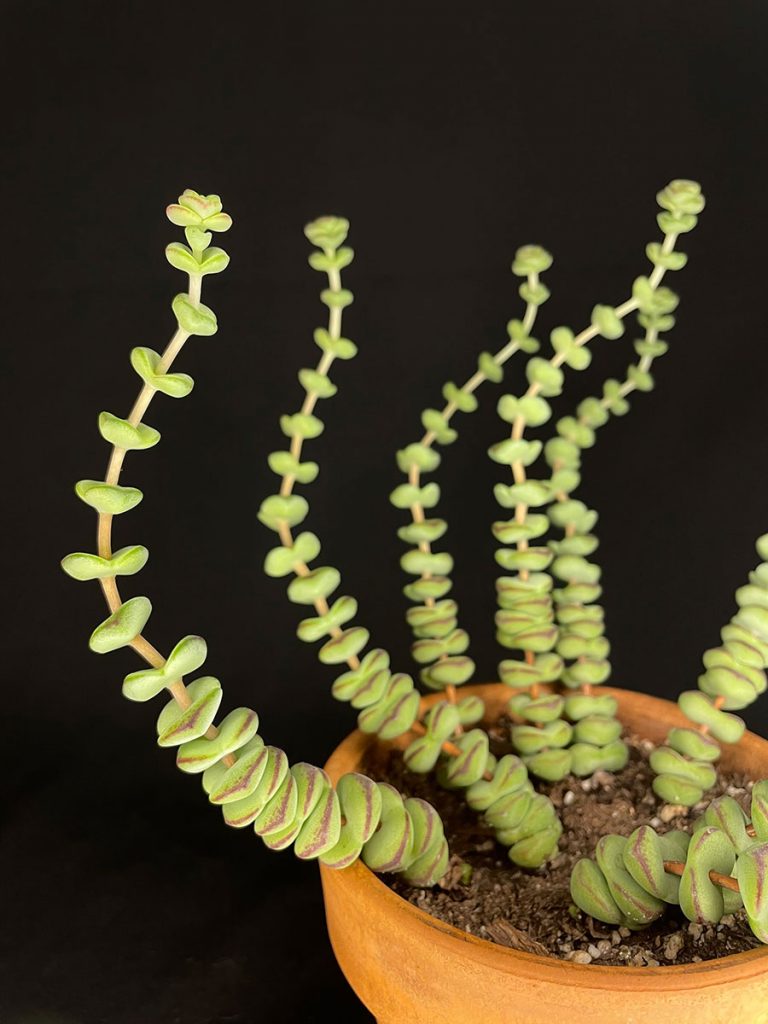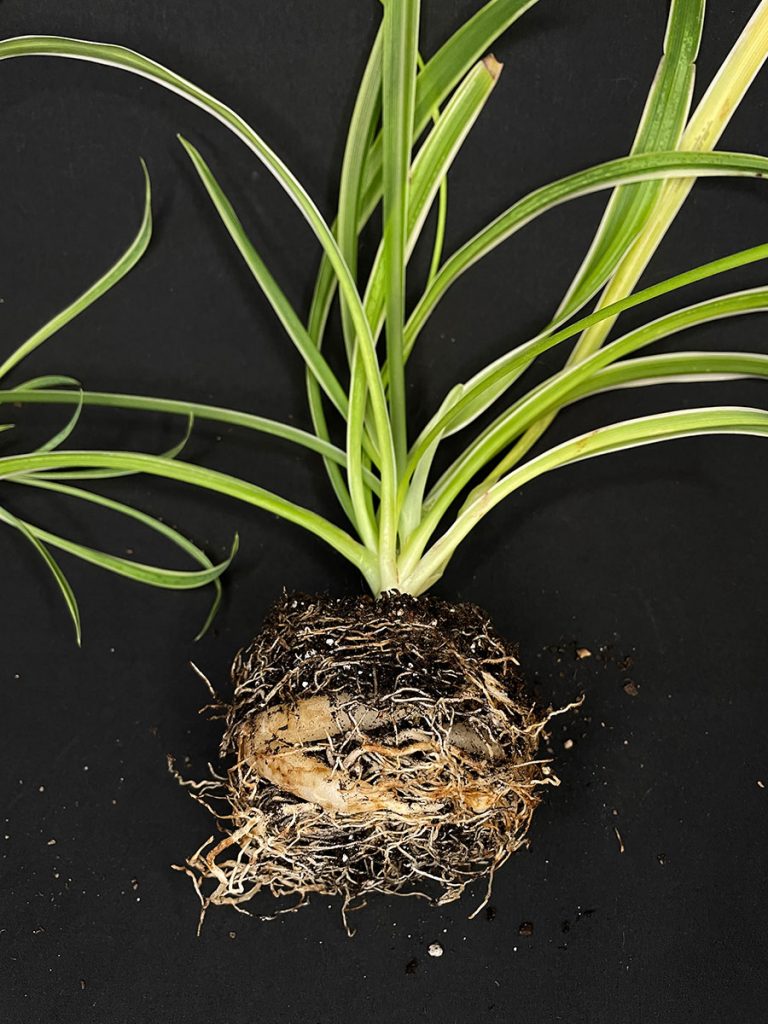Bulletin #2612, Tips for Growing Houseplants in Maine: Dealing with Houseplant Problems
Tips for Growing Houseplants in Maine: Caring for Houseplants in Maine (PDF)
Tips for Growing Houseplants in Maine: This newly revised and expanded fact sheet series addresses the basics of keeping houseplants. It will help you diagnose common problems with your houseplants, such as insects and diseases; overwatering or underwatering; improper lighting, temperature, or humidity; and insufficient pot size (root-bound). The series addresses how to start new plants from old plants, and also the unique challenges of growing houseplants in Maine, including the use of artificial light.
Adapted by Donna Coffin, Extension Professor, University of Maine Cooperative Extension
Reviewed by Rebecca Long, Extension Professional, and Matt Wallhead, Extension Ornamental Horticulture Specialist, University of Maine Cooperative Extension
For information about UMaine Extension programs and resources, visit extension.umaine.edu.
Find more of our publications and books at extension.umaine.edu/publications/.
A considerable number of disorders may affect both flowering and foliage plants grown indoors. These disorders relate to the environment in which the plant lives and the care the plant receives.
Causes of Problems on Indoor Plants
Overwatering
Overwatering and/or poor drainage reduces soil aeration. Roots die or are restricted and water and essential nutrients are not absorbed. The result may be browning of leaf tips or margins, leaf yellowing, leaf drop, wilting of the entire plant, and little or no new growth. Soil type, plant type, container type, time of year, and the environment are factors that affect ideal frequency of watering. Soils may look dry when they are not or the reverse may be true. There is no given time, such as once a week or every 2 to 3 days, for watering foliage plants. Supply water as needed, not on a time schedule. Most plants should be watered when the top inch of soil feels dry. For drought tolerant plants, like cacti and succulents, the soil should be allowed to dry completely between waterings. Providing good drainage and using a potting mixture of equal portions garden loam, perlite or coarse sand, and peat moss will help to avoid overwatering problems. Plants should not have standing water in their trays.
Underwatering
Overwatering is a more common source of issues for houseplants than underwatering, but when underwatering is an issue the cause is usually frequent but light watering. Regardless of how often you water, each watering should thoroughly wet the soil and the entire root ball. The excess water should drain out of the container and the tray should be emptied.
Overfertilizing
Too much fertilizer injures plant roots and may result in many of the same symptoms as those stemming from overwatering. Follow manufacturer’s directions for the correct amount of fertilizer.
Improper light
Although excess light (full sun) may result in leaf spotting, leaf yellowing, or wilt, this is unlikely in most home growing situations. However, sudden increases in light levels, like moving a plant outdoors into full sun, is likely to damage even sun-loving plants. Insufficient light, which is much more common in home growing situations, may cause leaf yellowing, drop of older leaves, weak new growth, new leaves smaller than normal, and with some flowering plants, failure of flower buds to develop or bud drop before opening. Etiolation, when stems become long and weak, with large spaces between leaves, is a common sign of insufficient light, especially in succulents grown indoors.
Low humidity
Most foliage plants grow best at relative humidity near 50 percent. Many indoor environments in the Maine winter have much lower humidity. Browning of leaf tips and margins may occur if the humidity is low. Although humidifiers can be used to effectively raise humidity levels, proceed with caution because excessive humidity levels in a home can result in the growth of harmful and damaging molds. Although it may be satisfying, misting plants does not provide the consistently high humidity levels needed. For those who are particularly passionate about humidity-loving plants, such as ferns or orchids, it may be worth investing in enclosures such as glass cloches or terrariums.
Root-bound
When the roots of a plant are a tight mass all around the root ball, that plant is said to be root-bound. This condition makes it difficult to water and fertilize properly. The result is leaf yellowing. The plant should be transferred to a pot that is 2-4 inches larger in diameter.
Insects and mites
Mites, scale insects, and mealybugs can be a problem, especially when foliage plants are kept outside in the summer. Learn to recognize these pests and follow recommendations of entomologists to eliminate them. See University of Maine Cooperative Extension Bulletin #2613 Controlling Insects and Disease in Houseplants and the UMaine Extension Home and Garden website for links to common pests found in the home.
Pesticide or air pollution injury
It may occasionally be necessary to use chemicals on houseplants to control spider mites, scale insects, etc. Severe injury can occur on some kinds of plants, especially when these chemicals are not used according to directions on the label. Combustion by-products from faulty propane or natural gas appliances can also affect plants. Plant injury may be in the form of marginal leaf burn, yellowing, spotting, or distortion of normal growth. Both inorganic and organic pesticides may cause injury on some plants.
Temperature
Temperatures 68o to 70o F are best for most foliage plants. Homes with wood heat may experience very high temperatures, which can cause problems. In public buildings, night and weekend temperatures may be reduced to levels that can injure more temperature-sensitive plants. Some flowering houseplants grow and flower best at temperatures near 60o F and therefore may not do well in many homes. Nighttime temperatures of 60–65o F help prolong blooms on some flowering plants.
Acclimatization
Foliage plants that are sold to the consumer in the garden store or other retail outlets are propagated and allowed to grow to salable size in greenhouses or commercial foliage nurseries in Florida and other warm climates. The growing conditions — high humidity, high light intensities, continuously moist soil, lots of fertilizer — are quite different from those in the indoor environment of the home or public buildings, especially during the long Maine winter. Moving plants suddenly from these optimum growing areas into the low light and dry atmosphere of indoors can cause leaf yellowing, leaf drop, or other problems. Acclimatization — adjusting plants to lower light, lower fertility, less frequent watering, etc. — should be done gradually. Acclimatization should be and usually is done before the plants are marketed. But sometimes “bargain” plants not properly acclimatized are offered for sale and problems occur in the home environment. Give new plants a week or two to adapt to your home’s conditions before repotting to avoid the double stress of acclimatization and transplant shock.
Poor root development or root rot
Poor root development may be a result of excess or insufficient water, poor drainage, or improper growing medium. If root issues are suspected, gently remove the plant from the pot to inspect the root system. Healthy roots should generally be firm and white. Signs of root rot include brown, mushy, or soft roots. See Bulletin #2613, Controlling Insects and Disease in Houseplants, for more information.
Additional Resources
- Bulletin #2611, Caring for Houseplants in Maine
- Bulletin #2613, Controlling Insects and Disease in Houseplants
- Bulletin #2614, Growing Houseplants Under Artificial Lights in Maine
- Bulletin #2615, Creating New Plants from Old Plants
- Bulletin #2516, FAQ About Houseplants in Maine
Sources
Houseplants in Maine by Lois Stack, Ornamental Horticulture Specialist, University of Maine Cooperative Extension
House Plant Tips by Gleason Gray, Extension Educator, Penobscot County, University of Maine Cooperative Extension
Information in this publication is provided purely for educational purposes. No responsibility is assumed for any problems associated with the use of products or services mentioned. No endorsement of products or companies is intended, nor is criticism of unnamed products or companies implied.
© 2021
Call 800.287.0274 (in Maine), or 207.581.3188, for information on publications and program offerings from University of Maine Cooperative Extension, or visit extension.umaine.edu.
In complying with the letter and spirit of applicable laws and pursuing its own goals of diversity, the University of Maine System does not discriminate on the grounds of race, color, religion, sex, sexual orientation, transgender status, gender, gender identity or expression, ethnicity, national origin, citizenship status, familial status, ancestry, age, disability physical or mental, genetic information, or veterans or military status in employment, education, and all other programs and activities. The University provides reasonable accommodations to qualified individuals with disabilities upon request. The following person has been designated to handle inquiries regarding non-discrimination policies: Director of Institutional Equity and Title IX Services, 5713 Chadbourne Hall, Room 412, University of Maine, Orono, ME 04469-5713, 207.581.1226, TTY 711 (Maine Relay System).



